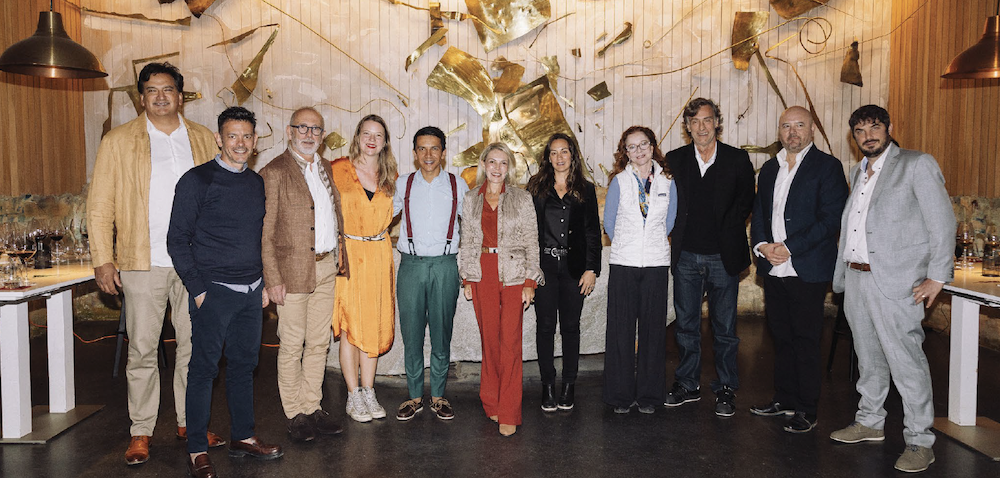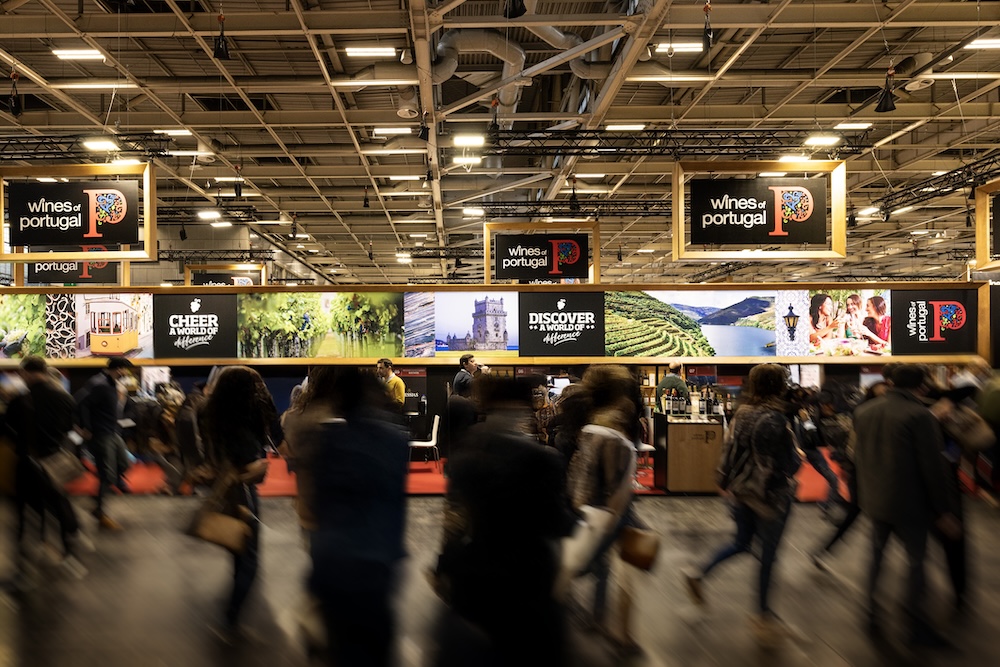
Discovery

Discovery
By Isabelle Escande - Photographs: courtesy of the estates, posted on 18 September 2023
Although some Spanish wine regions have traditionally produced rosés, there is no denying that the reputation of pink wines has never equalled that of the country’s reds or whites. But the winds of change are blowing, lifting the outlook for rosés. Increasingly, bodegas are embracing the huge potential for this style of wine, when it is crafted with care.
The change is already reaping rewards – Spanish rosés are increasingly in demand in the international marketplace and faced with competition from French and Italian behemoths, the industry is determined to garner attention.
For many years, Spanish bodegas paid little or no attention to production of rosé wines, explains Jennifer Lafuente at Bodega Tempore. “They tended to be more an offshoot of red wine production” rather than classed as products in their own right. That perception has now changed, however. Not only is rosé viewed as a potentially high quality pour, it is also seen as a way of aligning with market trends and therefore a genuine blessing for wineries that export.
That’s because rosés tick all the boxes. Fresh and fruit-forward, they match the zeitgeist for less woodsy and alcoholic wines, ones that are more consumer-friendly. This also explains why in Spain, where consumption of rosé has never really been significant, the younger generations are the catalyst for a change in drinking patterns. In export markets, where rosés are traditionally shipped, the figures are constantly on the rise. Although rosés still only represent a relatively small share of production at the five wineries we met with – totalling 10% at most – exports have grown.
Why the popularity though? The wineries have deliberately focused on the variety and quality of their wines to satisfy differing needs. They have shied away from a single image and have successfully combined tradition and new techniques, adding a dash of free-thinking which seems to have hit the mark. A cursory glance at the infinite array of colours of Spanish rosé – ranging from onion skin to deep pink – reveals just how much the category is proudly displaying its varied wardrobe…
Celler de Capçanes has made a name for itself, among other things, by producing kosher wines. One of the most representative wineries in the Montsant appellation area in Catalonia, it crafts two rosés, one of which complies with the ritual requirements of the Jewish religion. Both are made using the saignee process from the native variety Grenache, “which lends the wines very perfumed, fresh characters with intense red fruit notes, like strawberries or raspberries”, explains Helena Pagès, tasked with exports and communications at the winery. “It gives our rosé wines very appetising flavours and a colour spectrum ranging from pale pink onion skin to a very captivating, slightly darker pink”.
Their colour may be more akin to the rosés of Provence than those of northern Spain, but what sets Celler de Capçanes’ wines apart is “their fruity palate, their silky tannins and their saline touch which offers up a very long, elegant finish”, stresses Pagès. The wines have been widely distributed across the European market for several years, primarily in Germany, the United Kingdom, Switzerland and Belgium, major rosé consumer countries. As for the kosher label, its main following outside the cities of Europe is in Israel and the United States.


Located in one of the finest wine areas in DO Utiel-Requena, West of Valencia, Bodegas Nodus is set within a naturally blessed region of high environmental value. Surrounded by pine groves and eight monumental holm oaks, the winery has 200 hectares, 80% of which is planted to the native grape variety Bobal with vines over 40 years old.
Obviously, rosés provide a great showcase for the variety, with its fruity aromas, although Tempranillo is also used, stresses the bodega’s export assistant Marisa Donnan. Bobal allows the winery to run the gamut in terms of nuance and to meet the needs of its international customers. Its rosés are mostly sold in export markets and are “seasonal wines”, admits Donnan. Orders are placed in the first quarter of the year, ahead of the summer season.
There is no denying that demand for rosé wine has constantly increased over the past few years, adds Donnan, particularly in markets like Holland and Germany. Bobal, with its low alcohol content and good acidity, appeals to international palates. Also, the short, cold macerations and saignee method used by the winery produce wines that are very fresh yet also offer up volume on the palate, and these qualities are something present-day consumers value.



According to Eduardo Peña, marketing director at Bodegas Marqués del Atrio, the reason why rosés have always been confined to “local consumption” in Spain is because they have never developed a full-fledged identity or robust reputation. That is, until now, with a radical change in direction.
The rosés crafted by Marqués del Atrio receive the same care and attention as their red and white counterparts, proudly displaying their aromatic intensity. The nose delivers an explosion of fruit aromas where red berries are entwined with citrus perfumes and a dash of flowers. Volume and freshness adorn the palate. These features stem partly from the choice of cold fermentation, which maximises aromatic integrity, after the fruit has gone direct-to-press.
This “more modern” style resonates with preferences expressed in recent times in the global marketplace, stresses Peña. Although sales of rosé account for a marginal 5% of total exports, the percentage is bound to increase due to the rise in importer countries, adds Peña. Yesterday’s Germany and the United Kingdom have now been joined by the United States and Mexico, along with Asia, even though the pandemic did put a damper on exports.



Bodegas Tempore was the first to conquer international markets with its organic Grenache so it was only natural that the winery should choose the variety to make its rosés. “The choice of single varietal Grenache is a meaningful aspect of our identity”, admits Paula Yago Aznar, the winery’s owner, “along with our commitment to the environment and biodynamic farming”. Obviously, of paramount importance too is the unique terroir of the Lower Aragon region, with its limestone and mineral soils.
Here, Grenache thrives and the variety is conducive to producing “very fruity, aromatic, elegant and fresh rosés, that work equally well for newbies as they do for the more demanding consumers”, explains Yago. These traits offer differentiation in overseas markets where demand is increasingly strong. Although rosés make up only a small share of production (8%), there is no denying that exports are flying high. Traditional markets, such as Belgium and Holland, have now been joined by other importer countries such as the United States and Central Europe.
The rosés at Bodegas Tempore are extremely fruit-focused with very appealing, rich aromatics, length on the palate and freshness, none of which is a mere accident. The fruit is selected in the vineyard and harvested early “to preserve ideal acidity levels”, says Yago. Once at the winery, it goes direct-to-press in order to avoid contact between the must and the skins and produce a unique, subtle coral hue, which is every bit as appealing as the colour of Provence rosés!



In its high-elevation vineyards in Yecla, this family has been growing Monastrell – aka Mourvèdre – for four generations. The variety acts as a mirror to its quality terroir and the winery’s rosés inevitably pay homage to this native grape. The wines show aromas of red fruits and flowers as well as a rounded, silky palate. Just like the other wineries surveyed, Bodegas Antonio Candela has also witnessed an increase in its exports of rosé, prompting the company to expand its portfolio, explains its export manager, Esther Muñoz Iniesta.
By using short soaking, the winery produces a pale pink colour that aligns with current trends. The rosés ferment at low temperatures in stainless steel tanks and every step is taken to underscore the freshness of the aromas. The winery’s impressive track record illustrates that the boom in Spanish rosés is not confined to the regions traditionally associated with this style of wine, including Navarre and Rioja. Their popularity is widespread, allowing Spanish rosés to establish a firm foothold in the international marketplace. And for Bardolino and Provence, the warning salvo has been fired!



Discovery

Discovery

Discovery